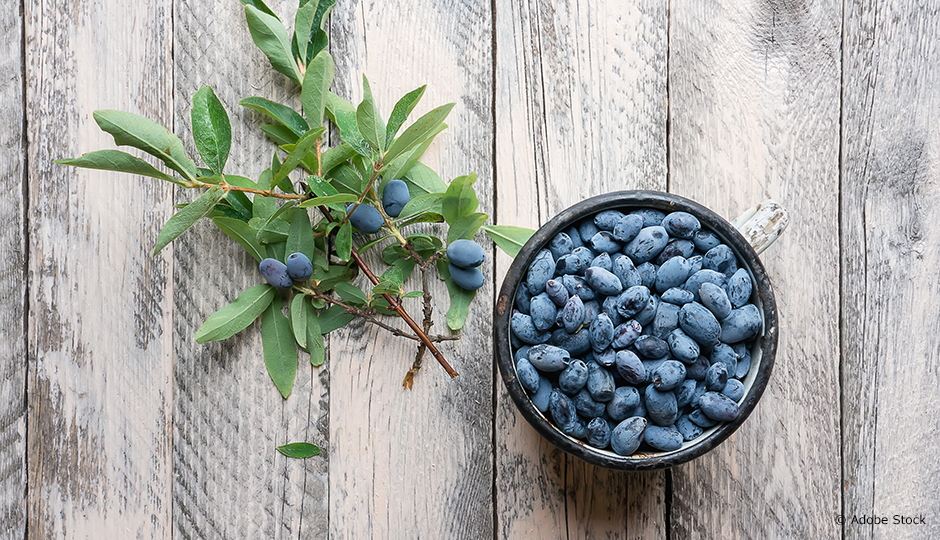The berry family is growing! The new arrival, the haskap or blue honeysuckle, boasts an impressively high antioxydant content and complex flavours. Since 2007, nearly one million haskap bushes have taken root in Québec, one-third of them in Saguenay–Lac-Saint-Jean. And yet this fruit, which looks like an elongated blueberry, is struggling to make its way into grocery stores, in part because orchards are not producing the expected yields. Maxime Paré, a professor and agronomist in the Department of Fundamental Sciences at Université du Québec à Chicoutimi, and his research student, Catherine Tremblay, a biologist and Master’s student in renewable resources, decided to address the following question: have we been growing haskap under the proper conditions?
This fruit is struggling to make its way into grocery stores, in part because orchards are not producing the expected yields.
As there is very little agronomic information on the haskap, the researcher and his student went to the root of the issue. They began by testing the acidity of different soils in the greenhouse and in the field at Québec’s largest haskap orchard, near Labrecque, Lac-Saint-Jean. Their findings showed that haskap bushes produce three times more biomass (organic matter) in slightly acidic soils (pH between 5.5 and 6). Maxime Paré and Catherine Tremblay then looked at the impact of fertilization. They discovered that the presence of fertilizers, especially nitrogen, appears to impair root system development in haskap bushes.
Over the next few years, the researcher will test the application of various fertilizers to study the link between fertilization and fruit production. As the haskap does not appear to appreciate large quantities of fertilizer, the soil specialist will examine indirect fertilization by fertilizing the grass strips separating rows of haskap bushes. Will the haskap benefit from the nutrients given to its companion plants?
Hoping to make the haskap the next superfruit, Maxime Paré is sharing his data with the agronomists responsible for producing a guide on haskap production and with the members of a Canada-wide network of researchers. The haskap is in good hands!




